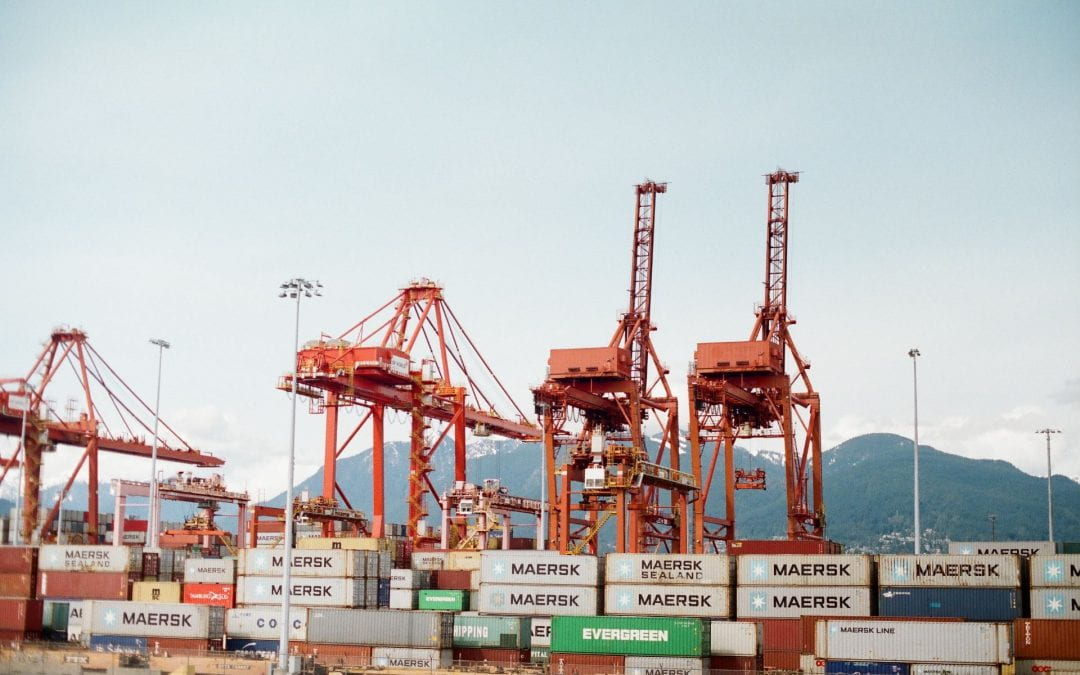By Stefano Riela
As Covid-19 cases decline, capacity constraints and shortages should ease, spending on travel and entertainment should pick up, slowing demand for goods and taking some of the pressure off supply chains and delivery times.
In recent months it has been common to read titles mentioning shortages and delays – for building timber, toys, coffee, cars – where almost everything was ready in supermarket shelves or in a few days’ time if bought online. The container market has seen extraordinarily high freight rates and the highest level of vessel utilisations in the sixty-year-long history of the maritime container industry. Ports that used to effortlessly manage huge number of containers – such as Long Beach/Los Angeles, Ningbo/Shanghai, Hong Kong/Shenzhen/PRD – are now the bottleneck of cargo shipping with a growing number of vessels waiting to berth.
In New Zealand, ports of Auckland and Tauranga have been hit by the worst disruption since 1998, since data about global delivery times has been available. The disruption is not only for supply-chains, which deliver products to the final consumers, but also for the broader value-chains that encompass every single step from design to delivery, thus including intermediate phases such as raw materials supply and manufacturing.
To provide a general explanation for this disruption, we need to consider how globalized our lives have become. This is thanks to technological development (communication and transport), free trade agreements (that reduced tariffs and other type of barriers) along with a reduction of information asymmetries (internet and cultural convergence).
Trade, like blood, began flowing smoothly along globalized value chains at the beat of just-in-time production: parts delivered to factories right as they are required were keeping inventories thin, thus reducing the cost of production and boosting profits.
This globalization was the triumph of David Ricardo’s theory: trade offers an opportunity as long as countries specialise in specific ‘links’ of value chains according to their respective comparative advantage. When China joined the World Trade Organization in 2001, free trade on a global scale was not utopia anymore and, in the foreseeable future, trading across continents would be as smooth as trading within a country.
This optimism for a frictionless global trade experienced setbacks due to natural disasters (for instance, the earthquake in Taiwan in 1999 and that in Japan in 2011) and to political decisions (such as the Brexit referendum and the election of Donald Trump as POTUS in 2016). But nothing has been as disruptive as Covid-19.
Enter Covid-19
The welcomed Ricardo’s specialisation turned into a nightmare as soon as we discovered that a sudden increase in demand is not matched by immediate supply due to manufacturing and trade disruptions, significant issues arising as a consequence of lockdowns and export restrictions.
In the beginning of the pandemic, shortages were focused on personal protective equipment (PPE) such as gowns, gloves, face-masks, eyewear. Also, ventilators with manufacturing concentrated in low-cost countries (mainly South East Asia). Then, it was the case of vaccines whose manufacturing is concentrated mainly in developed countries with a legitimate interest in guaranteeing domestic health as a key driver of ‘national security’.
More recently, it was the case of semiconductors (chips) with manufacturing concentrated in South Korea and Taiwan. The link between Covid-19 and chips is less direct than the one for PPEs and for vaccines. When the pandemic began, lockdowns brought a boom in sales of consumer electronics, car manufacturers slashed orders for chips on the expectation that demand for cars would plunge. When sales of vehicles unexpectedly revived, chip manufacturers were unable to cope with the surge in demand. In the face of an enduring shortage of chips, many carmakers announced that they will slash production.
However, also in other sectors, factories are limiting operations due to delays in getting inputs and to labour shortages. As far as the latter is concerned, generous Covid-related benefits have made harder to find truck drivers and longshoremen.
What’s next?
As Covid-19 cases decline, capacity constraints and shortages should ease, spending on travel and entertainment should pick up, slowing demand for goods and taking some of the pressure off supply chains and delivery times.
But chains are as strong as their weakest link, and other disruptions may be triggered by a new wave of Covid-19 or by extreme weather events. This is why firms are: i) diversifying their network of suppliers (better not to put all your eggs in one basket), ii) stockpiling critical supplies (bearing the cost of unsold goods as an insurance against possible disruption), iii) shortening value chains with the aim of a reshoring (moving at home what used to be done abroad).
Those models may increase the resilience of value-chains sacrificing the efficiency of a global approach set on the just-in-time that unveiled its vulnerability. Thus, we cannot be surprised if the inflation we are currently experiencing because of shortages and delays will have a long, thus not temporary, tail.
Stefano Riela is an Academic Fellow at Bocconi University. He is an expert in European economic policy.
Disclaimer: The ideas expressed in this article reflect the author’s views and not necessarily the views of The Big Q.
You might also like:
Will Covid-19 change access to essential goods?
Who controls the global economy in this COVID world?

